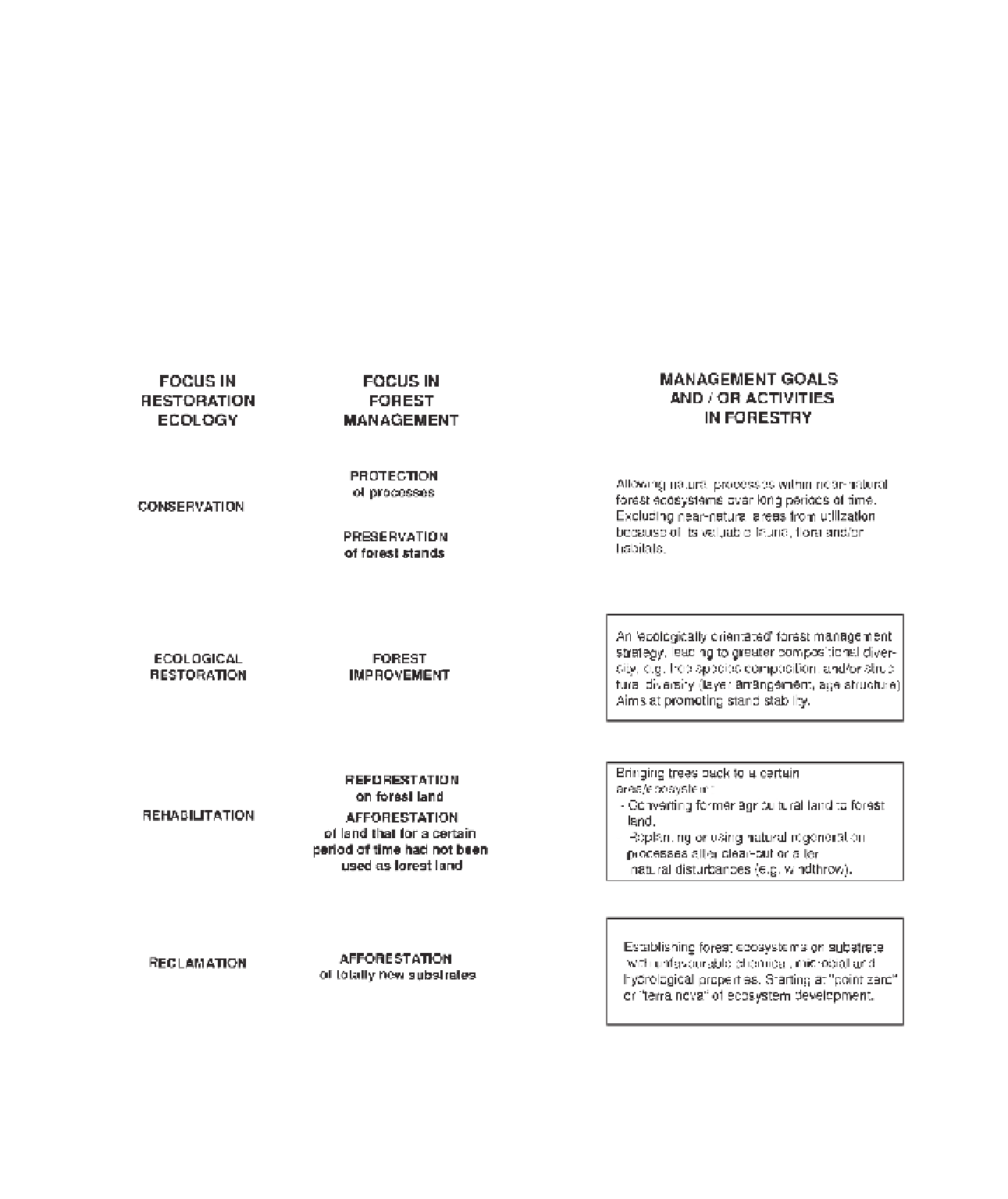Environmental Engineering Reference
In-Depth Information
direct human impact (i.e. close to PNV), and step by
step consider systems increasingly distant from this
state. We conclude at the extreme of sterile substrate
exposed to plant life, that is very far from PNV (see
Figure 12.1 ).
The terminology used in forestry dealing with this
topic is commonly different from that used in
restora-
tion ecology
. Figure 12.1 therefore compares the two
terminologies and explains the meaning of the terms
used in the forestry context. To clarify when and how
the wide spectrum of distances between existing veg-
etation on one hand and the potential natural vegeta-
tion on the other emerged, the chapter starts with a
short introduction to the history of temperate forests
and forestry (section 12.2 ).
12.2 A BRIEF HISTORY: TEMPERATE
FORESTS AND HUMAN IMPACT
During the time of maximum glaciation in the last ice
age, about 15 000 years ago, global climate was rela-
tively cold (mean world temperature about 4 K, in
Europe about 8 K lower than today) and dry (continen-
tal). Those parts of central Europe not covered by
ice were occupied by tundra-steppe. Many tree taxa
Figure 12.1
Terminology used in forestry as compared to restoration ecology.






